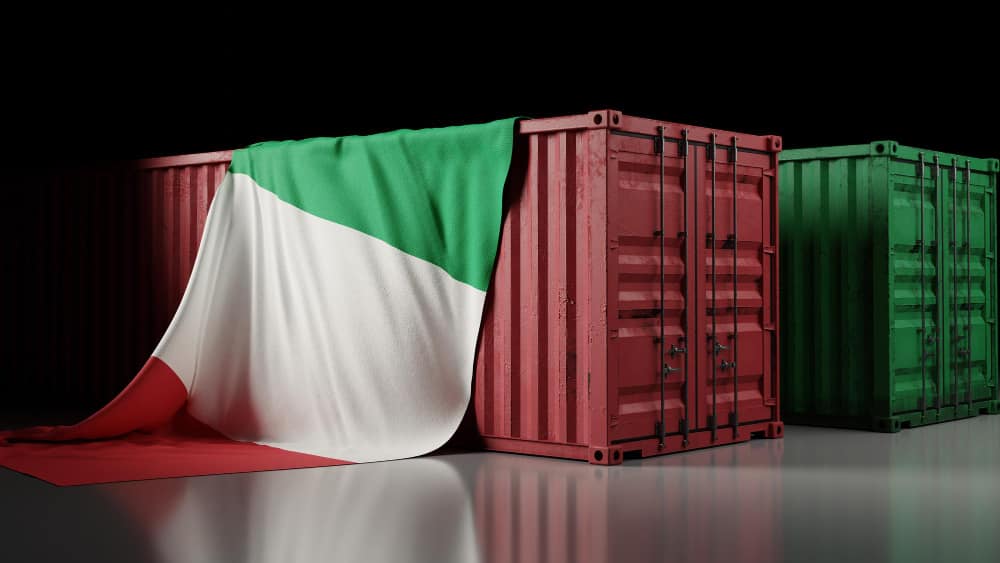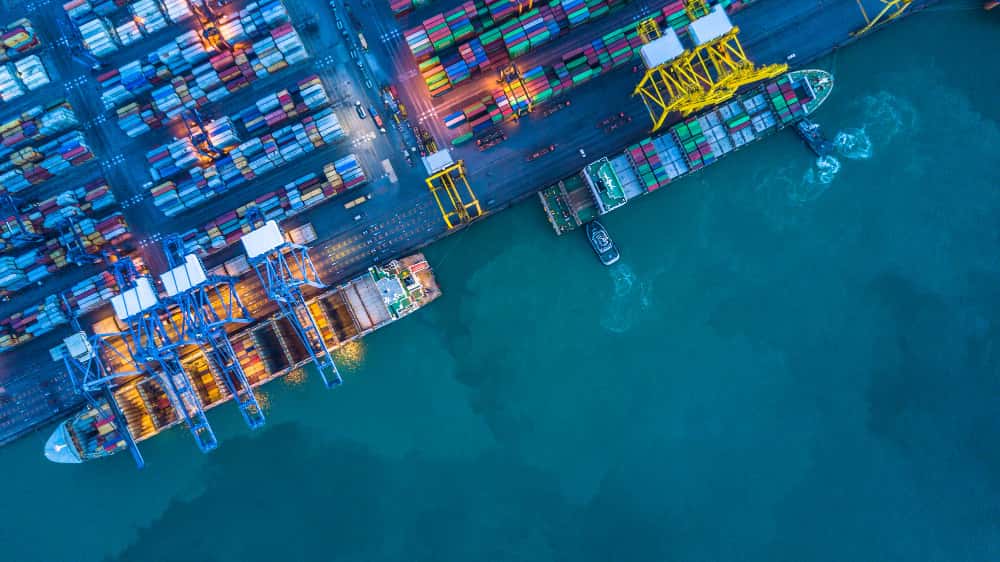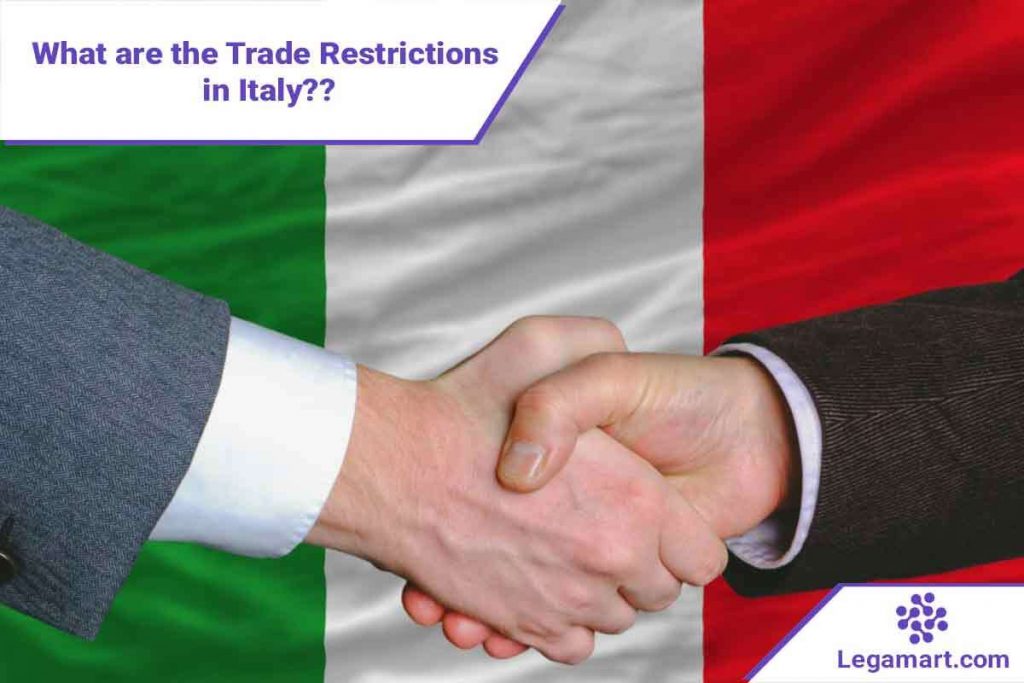Introduction
Italy provides enterprises with a strategic entrance to consumers in the European Union, Northern Africa, and the Middle East, thanks to its location at the heart of the Mediterranean Sea. It serves as a critical center for connecting southern, central, and eastern Europe.
if you want to read more about How to Apply for Copyright in Italy: A Step-by-Step Guide(2022) – Legamart click on the link
For many years, Italy had a trade deficit, and the trade restrictions in Italy were a little lenient, partly due to the lack of domestic energy resources and complete reliance on imports. However, the 1990s saw a turn for the better, starting with the devaluation of the lira in 1992, which opened up new export markets for many companies, particularly in Asia and the US.
Small and medium-sized businesses received a further boost from the decline in oil and gas prices in the middle of the 1990s, as well as from their vigorous product advertising, which allowed them to enter overseas markets. Today, “Made in Italy” is widely recognized as a sign of quality in many nations. With imports reaching US$215.887 billion and exports totalling US$242.332 billion, Italy recorded a trade surplus in 1998. Since then, the surplus has been reduced, with exports of 241.1 billion dollars in 2000 versus imports of 231.4 billion dollars. To get the most current statistics, please reach out to the assimilated team of lawyers at Legamart.
Italy benefits from the EU free market, devoid of trade restrictions or taxes. In 1999, 56.8% of Italian exports were made to other EU nations. Germany (16.4%), France (12.9%), the United Kingdom (7.1%), Spain (6.3%), and the Netherlands are Italy’s top European export destinations (2.9 percent). The United States, which purchases 9.5 percent of Italian exports, is the nation’s largest trading partner outside Europe. Recent years have seen an increase in Italian exports to China, South Korea, and Japan, as well as several Asian nations that have recently emerged as significant importers of Italian goods.
Transport machinery, electrical equipment, textiles and apparel, chemicals, and food and drinks make up the majority of Italy’s exports. Transport equipment is the single largest export, with FIAT serving as the primary supplier. FIAT exports various vehicles, including trucks, motorbikes, and railway carriages, and luxury automobiles (including Ferraris), for which the company is best known internationally.
Presence of Trade Restrictions in Italy

Italy benefits from the EU free market, devoid of trade restrictions or taxes. In 1999, 56.8% of Italian exports were made to other EU nations. Germany (16.4%), France (12.9%), the United Kingdom (7.1%), Spain (6.3%), and the Netherlands are Italy’s top European export destinations (2.9 percent). The United States, which purchases 9.5 percent of Italian exports, is the nation’s largest trading partner outside Europe. Recent years have seen an increase in Italian exports to China, South Korea, and Japan, as well as several Asian nations that have recently emerged as significant importers of Italian goods.
Export Trade Restrictions in Italy
According to the Economic Complexity Index, Italy’s economy ranked eighth in the world in terms of GDP (current US dollars), seventh in terms of total exports, tenth in terms of total imports, 31st in terms of GDP per capita (current US dollars), and nineteenth in terms of economic complexity in 2020.
For various strategic, medical, and other reasons, exports are subject to limitations. Imports and exports trade restrictions in Italy may be subject to quantitative and qualitative restrictions. The government may grant permission or licence if the goods are not prohibited for a given cause.
The export and intra-EU transfer of a variety of goods are subject to specific restrictions, including:
– Dual-use items and technology (Recast Dual-Use Items Regulation).
– The trade restrictions in Italy and the export of cultural commodities are governed by Regulation (EC) 116/2009.
– Risky substances (Regulation (EU) 649/2012 on the export and import of hazardous substances)
– Items that could be used in executions, torture, or other cruel, inhumane, or humiliating practices (Anti-Torture Regulation).
Import Trade Restrictions in Italy

Import trade restrictions in Italy are policies that governments typically establish to limit a company’s capacity to import goods into international markets. Tariffs, quotas, and voluntarily restrained exports are the most typical restrictions. Tariffs act as a levy on imports, making them more expensive than indigenous products. Italy abides by EU rules as it is a member of the EU.
Non-tariff trade restrictions in Italy and import restrictions are a result of both national and EU laws.
Although some products have occasional limitations, the EU has a generally liberal approach to foreign trade. (for example, agricultural products).
The following non-tariff import limitations and internal transfer limitations are in effect at the EU level, which also forms part of the trade restrictions in Italy:
– Imports of fake goods, paedophile goods, asbestos, goods containing certain dangerous materials, goods made from certain animals, goods made from certain plants, goods made from certain plants, and goods made from the skins and furs of cats and dogs are all strictly prohibited.
– Military goods, weapons, ammo, dual-use goods, endangered wild animal and plant species, specific plants and plant products, live animals and animal products, foodstuffs, medications, narcotics, cultural property, slot machines and other gambling-related goods are all subject to specific import restrictions and authorizations.
– Textile and steel products are examples of items with import quotas and call for import licences.
– The REACH Regulation (1907/2006) and the Classification, Labelling and Packaging Regulation (1272/2008) have labelling requirements that certain products must adhere to.

– The Food Information Regulation (1169/2011) stipulates that food goods must meet country-of-origin marking standards. On April 1, 2020, new EU regulations mandated that food companies identify products with the origin or provenance of their essential ingredients. Along with current regulations in the Food Information Regulation, certain obligations outlined in Commission Implementing Regulation (EU) 2018/775 are applicable. In summary, food firms may now be required to include additional information on packaging detailing the origin of the significant ingredient if the origin or provenance of a product’s ingredients differs from the origin or provenance currently mentioned on the food label (s).
– These regulations aim to prevent consumers from being duped regarding the place of origin of a product’s contents. Additionally, under trade restrictions in Italy, there has been an enactment of national laws requiring the country-of-origin labelling of rice, durum wheat used in durum wheat flour pasta, tinned tomatoes, tomato concentrate, and sauces with at least 50% tomato as an ingredient.
– In 2009, the sale of cosmetics tested on animals was outlawed in Italy and the rest of the EU. Since March 11, 2013, cosmetics tested on animals outside of the EU have been prohibited from being sold in the EU, and the Cosmetics Regulation (1223/2009) places severe.

Furthermore, Legislative Decree No. 221/2017 of Italy, which became effective on January 17, 2018, governs:
– The procedures for dual-use technology and item export permission (in compliance with the Dual-Use Items Regulation).
– Trade-specific products that could be used in executions, torture, or other cruel, inhumane, or humiliating practices (per Regulation (EC) 1236/2005).
– The EU’s punitive economic and financial sanctions against specific third-world nations.
Italy has been very proactive in implementing significant changes in its rules related to Italian Foreign investment; one such example is the confirmed decree No. 21/2022, which included expansion of the definition of non-EU individual or entity.
Conclusion
Italy is well-known for its cuisine, art, and rich history, but it also provides solid R&D, innovation, and design infrastructures for businesses, as well as a robust industrial base. Italy’s strategic logistics hub and entrance to the European Single Market are made possible by its advantageous geographic location. Another gigantic advantage is the leniency around trade restrictions in Italy.
A large portion of Italy’s enormous transportation system is one of Europe’s top logistical hubs. Italy’s ports receive 20% of global maritime traffic, 30% of fuel traffic, and 25% of container traffic due to its strategic Mediterranean location. As a result, the trade restrictions in Italy are consumer friendly and is a win-win situation for all traders. To know more, we await to hear from you at Legamart.




